
The Army of the Potomac was the primary field army of the Union army in the Eastern Theater of the American Civil War. It was created in July 1861 shortly after the First Battle of Bull Run and was disbanded in June 1865 following the surrender of the Confederate Army of Northern Virginia in April.

Fitzhugh "Fitz" Lee was a Confederate cavalry general in the American Civil War, the 40th Governor of Virginia, diplomat, and United States Army general in the Spanish–American War. He was the son of Sydney Smith Lee, a captain in the Confederate States Navy, and the nephew of Robert E. Lee.

Alexander Robert Lawton was a Confederate lawyer, politician, diplomat, and brigadier general in the Confederate States Army during the American Civil War.
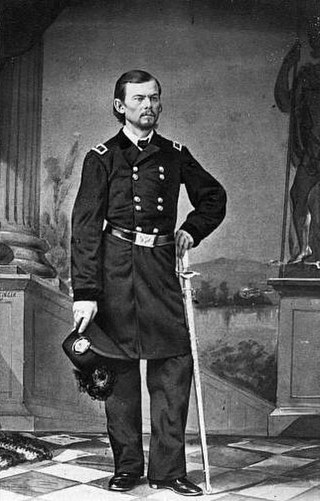
Franz Sigel was a German American military officer, revolutionary and immigrant to the United States who was a teacher, newspaperman, politician, and served as a Union major general in the American Civil War. His ability to recruit German-speaking immigrants to the Union armies received the approval of President Abraham Lincoln, but he was strongly disliked by General-in-Chief Henry Halleck.

Richard Heron Anderson was a career U.S. Army officer, fighting with distinction in the Mexican–American War. He also served as a Confederate general during the American Civil War, fighting in the Eastern Theater of the conflict and most notably during the 1864 Battle of Spotsylvania Court House. Anderson was also noted for his humility.

The Maryland campaign occurred September 4–20, 1862, during the American Civil War. The campaign was Confederate General Robert E. Lee's first invasion of the North. It was repulsed by the Army of the Potomac under Maj. Gen. George B. McClellan, who moved to intercept Lee and his Army of Northern Virginia and eventually attacked it near Sharpsburg, Maryland. The resulting Battle of Antietam was the bloodiest day of battle in American history.
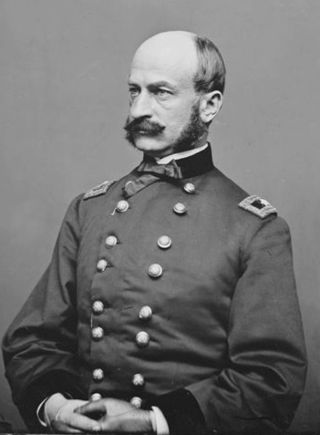
Baron Adolph Wilhelm August Friedrich von Steinwehr was a German-Brunswick army officer who emigrated to the United States, became a geographer, cartographer, and author, and served as a Union general in the American Civil War.

Joseph King Fenno Mansfield was a career United States Army officer and civil engineer. He served as a Union general in the American Civil War and was mortally wounded at the Battle of Antietam.
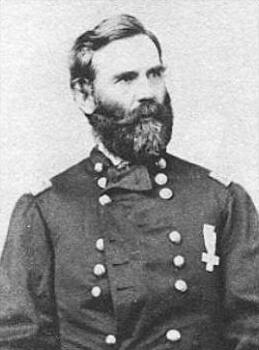
George Washington Getty was a career military officer in the United States Army, most noted for his role as a division commander in the Army of the Potomac during the final full year of the American Civil War.

Jesse Lee Reno was a career United States Army officer who served in the Mexican–American War, in the Utah War, on the western frontier and as a Union General during the American Civil War from West Virginia. Known as a "soldier's soldier" who fought alongside his men, he was killed while commanding a corps at Fox's Gap during the Battle of South Mountain. Reno, Nevada; Reno County, Kansas; Reno, Ohio; El Reno, Oklahoma; Reno, Pennsylvania; Fort Reno (Oklahoma); and Fort Reno Park in Washington, D.C. were named after him.

William Henry French was a career United States Army officer and a Union Army General in the American Civil War. He rose to temporarily command a corps within the Army of the Potomac, but was relieved of active field duty following poor performance by his command during the Mine Run Campaign in late 1863. He remained in the Army and went on to command several Army installations before his retirement in 1880.

Israel Bush Richardson was a United States Army officer during the Mexican–American War and American Civil War, where he was a major general in the Union Army. Nicknamed "Fighting Dick" for his prowess on the battlefield, he was mortally wounded at the Battle of Antietam near Sharpsburg, Maryland.

William Hays was a career officer in the United States Army, serving as a Union Army general during the American Civil War.
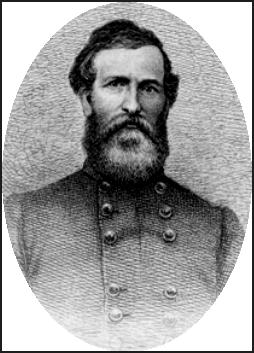
David Rumph Jones was a Confederate general in the American Civil War.

Julius H. Stahel-Számwald was a Hungarian soldier who emigrated to the United States and became a Union general in the American Civil War. After the war, he served as a U.S. diplomat, a mining engineer, and a life insurance company executive. He received the Medal of Honor for gallantry in action at the Battle of Piedmont in 1864.

Leopold von Gilsa was a career soldier who served as an officer in the armies of Prussia and later the United States. He is best known for his role in the misfortunes of the XI Corps in the Army of the Potomac during the American Civil War, particularly at the battles of Chancellorsville and Gettysburg, where many of his men were unjustly accused of cowardice.

Thomas Worcester Hyde was an American Union Army colonel, a state senator from Maine, and the founder of the Bath Iron Works, one of the major shipyards in the United States. He wrote two books about his experiences during the American Civil War and at the Battle of Gettysburg.
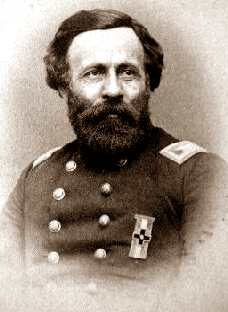
Hiram Burnham was an officer in the Union Army who commanded a regiment and then a brigade in the Eastern Theater of the American Civil War. He was killed in battle while assaulting Confederate positions near Richmond, Virginia, during the Battle of Chaffin's Farm.

John E. Bendix was an officer in the Union Army during the American Civil War who commanded two different New York regiments and then a brigade of infantry in Army of the Potomac in the Eastern Theater. He survived a serious wound at the Battle of Fredericksburg in December 1862. He was noted as a prolific recruiter and organizer, and after the war, as a brevet general in the New York Militia, he helped organize the reconstruction era the New York state militia that later became the New York Guard. Bendix was mustered out of the Union Army on May 7, 1863. In July 1866, he was nominated and confirmed for appointment to the grade of brevet brigadier general of volunteers, to rank from March 13, 1865.

Sumner Carruth was an officer in the volunteer army of the United States during the American Civil War. He commanded the 35th Massachusetts Volunteer Infantry and eventually rose to the command of two different brigades in the IX Corps.




















